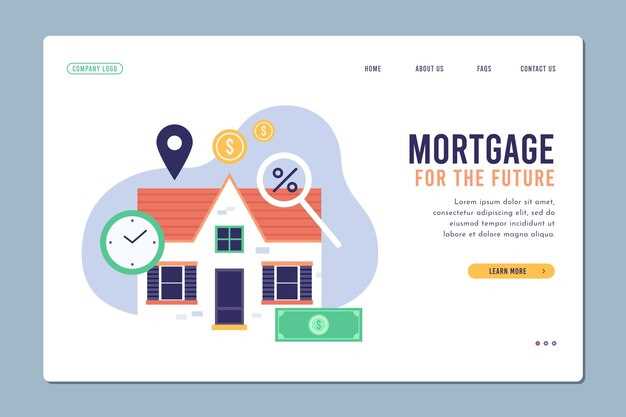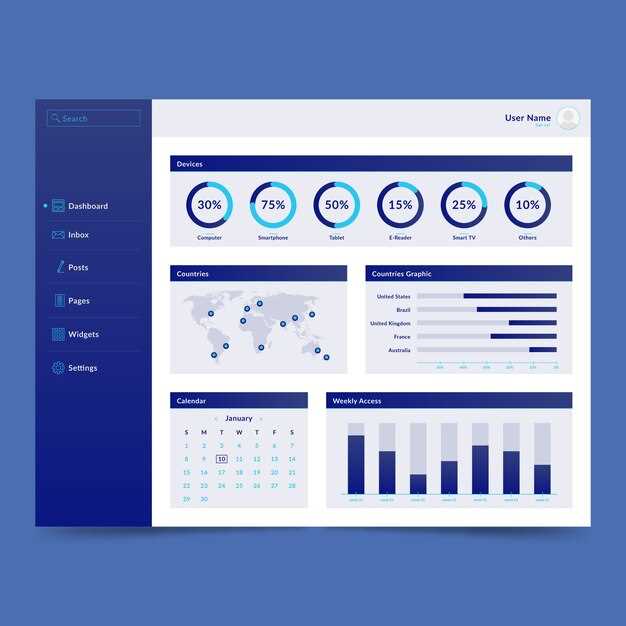Act quickly to keep your home financing plans on track. The Primary Mortgage Market Survey (PMMS) offers essential insights into current mortgage rate trends. With fluctuating rates impacting your mortgage, staying informed on these changes helps you make timely decisions and potentially save money over the lifetime of your loan. Understanding the data presented in the PMMS can guide you through selecting the most favorable mortgage rate available.
Each week, the PMMS provides a comprehensive overview of rate movements, offering fascinating insights into the market trends. Current analysis shows a slight downward trend in fixed mortgage rates, which may present an opportunity for prospective homebuyers to lock in lower rates. Keeping a close eye on these trends allows you to identify the best time to either refinance or secure new home financing. Remember, while rates may appear modest, even a fraction of a percentage change can significantly affect your monthly payments and overall loan costs.
Knowing which factors influence these rates can provide further advantages. The PMMS takes into account economic indicators such as inflation, employment rates, and central bank policies. Staying tuned to these aspects not only deepens your understanding of mortgage rate fluctuations but also empowers you to anticipate changes. This knowledge places you a step ahead, ensuring your financial decisions are grounded in robust data analysis and forward-thinking strategies.
Understanding Mortgage Rate Changes in 2025

Keep an eye on economic indicators like inflation and GDP. Inflation affects the purchasing power of money, often leading to interest rate hikes to control it. A strong GDP growth can also push mortgage rates upward as demand for loans increases.
Pay attention to Federal Reserve policies. In 2025, the Fed’s policies on interest rates will significantly impact mortgage rates. A decision to increase the federal funds rate can lead to higher mortgage interest rates, making it essential to monitor these announcements.
- Monitor global economic trends: Global events and economic health impacts rates. Trade relationships and geopolitical tensions can influence economic stability and, consequently, mortgage rates.
- Consider market competition: Lenders adjust rates based on competition, meaning more competitive markets might offer lower rates.
- Check the housing market: A booming housing market often leads to increased rates due to higher demand for mortgages.
Reassess your mortgage plans periodically and consult with financial experts. Regular reviews of your mortgage options alongside these factors can help you secure the best rates. Stay updated with weekly PMMS reports for the latest trends and predictions.
Factors Influencing Current Rate Shifts

Evaluate economic indicators to understand their impact on mortgage rates. Inflation stands as a major driver, with rising rates often leading to increased mortgage rates as lenders seek to maintain their margins. Monitor consumer price index (CPI) data closely, as it directly influences the Federal Reserve’s decisions on interest rate adjustments.
Consider employment statistics, as strong job growth can signal an expanding economy, prompting higher rates. Keep an eye on the monthly non-farm payroll report; a significant rise can push mortgage rates upward due to expectations of increased spending and borrowing.
Analyze fiscal policies, especially government spending and tax changes. Expansionary fiscal policy can increase government borrowing, affecting bond markets and potentially escalating mortgage rates. On the other hand, fiscal consolidation can lower them by reducing demand for credit.
Observe the global financial landscape, as international events can ripple through domestic markets. Economic stability in major economies like China and the Eurozone influences U.S. bond yields, impacting mortgage rates. Geopolitical tensions or trade policies might lead to market volatility, affecting rates.
Scrutinize housing market trends, as supply and demand dynamics can shift rates. A surge in home sales can increase demand for mortgages, nudging rates higher. Meanwhile, a slowdown might ease pressure on rates as demand wanes.
To better understand these relationships, review the table below summarizing influences on current rate movements.
| Factor | Impact on Rates |
|---|---|
| Inflation | Increased inflation typically leads to higher rates. |
| Employment Data | Strong job growth often results in rate increases. |
| Fiscal Policy | Expansionary policy may elevate rates; consolidation might lower them. |
| Global Events | International stability or tensions can cause rate fluctuations. |
| Housing Market | Increased demand for housing can push rates up. |
Implications of Federal Reserve Policies
Keep a close eye on Federal Reserve decisions, as their policies directly affect mortgage rates, which, in turn, impact your financial stability and investment strategy. The Federal Reserve often adjusts interest rates to control inflation and influence economic activity. When the Fed increases rates, expect mortgage rates to follow suit, making new loans and refinancing more expensive.
Lock in low rates before potential hikes by monitoring Federal Reserve meetings and statements. Historical data suggests that anticipation of rate changes can cause volatility in the mortgage market. Homebuyers and investors should consider fixed-rate mortgages during periods of rising interest rates for long-term stability.
Understand that when the Federal Reserve hints at lowering rates, it signals an opportunity for more affordable borrowing costs. Adjustable-rate mortgages may become attractive in these scenarios, allowing you to benefit from initial lower payments. However, remain cautious of future rate adjustments that might increase your costs.
Balance your portfolio by considering the broader economic indicators released by the Federal Reserve. Their assessment of employment rates and consumer spending provides insights into future policy decisions and potential impacts on housing markets. Use this information to adjust your investment strategies accordingly.
Your proactive approach will keep you ahead of market fluctuations, ensuring that you’re prepared for whatever economic shifts come your way. Stay informed, make strategic decisions based on reliable data, and align your mortgage and investment choices with Federal Reserve policies to optimize your financial outcomes.
Comparison with 2024 Rate Patterns
You should closely monitor seasonal fluctuations, as mortgage rates in 2024 appear to display distinct seasonal trends. Historically, rates tend to rise in the spring due to increased housing market activity. This pattern remained consistent through the first half of 2024, with rates increasing by an average of 0.3% from January to June.
Staying Informed on Economic Indicators: Pay attention to economic indicators like employment rates and inflation, as these significantly impact mortgage rates. In 2024, higher-than-anticipated inflation drove rates up by an average of 0.2% during July and August.
Global Economic Pressures: Expect global economic events to affect rate trends. For instance, geopolitical tensions in the first quarter of 2024 resulted in higher mortgage rate volatility, with fluctuations ranging up to 0.5% in some weeks.
Short-Term Rate Locks: Short-term rate locks might be advisable. With predictions indicating potential decreases in late 2024 due to anticipated economic slowdowns, a carefully timed refinance could save you money.
Evaluating these patterns can provide you with valuable insights. Compare these trends with previous years to make informed decisions about your mortgage strategy in 2024.
Practical Strategies for Navigating the 2025 Mortgage Landscape

Consider locking in your interest rate if you see attractive options in early 2025. Rate fluctuations are expected, so securing a good rate can safeguard your finances. Discuss options with your lender to explore early rate-lock programs that align with your financial capability.
- Enhance your credit score. Review your credit report for errors and prioritize paying down high-interest debts. A higher credit score can significantly decrease your mortgage rate, saving you money over the loan term.
- Evaluate different mortgage products. Fixed-rate and adjustable-rate mortgages have unique benefits and risks. A fixed-rate mortgage offers stability, while an adjustable-rate mortgage may have attractive initial terms. Analyze your long-term financial plans before making a decision.
- Utilize mortgage calculators. These tools can help you compare different loan scenarios, including varying down payments and loan terms, providing clarity on potential monthly payments and interest costs.
Build a solid financial buffer. Mortgage lenders will assess your debt-to-income ratio, so maintaining low overall debt levels improves your loan conditions. Saving for a larger down payment can also lower your monthly payment and may eliminate the need for private mortgage insurance.
- Communicate with a mortgage advisor. Regular consultations can keep you informed about potential market trends and suitable mortgage products.
- Stay updated on federal policies that may influence mortgage rates. Changes in the Federal Reserve’s policies can directly impact mortgage cost, so stay informed to make proactive decisions.
Assess regional real estate trends. In areas with rising property values, acting swiftly on mortgage applications might preserve your buying power, ensuring your entry into desired neighborhoods before prices climb further.
Choosing Between Fixed and Adjustable Rates
Choosing a fixed-rate mortgage often provides stability for homeowners who value predictable payments over the life of their loan. With interest rates locked in, budgeting becomes straightforward, making it easier to plan for the long-term. This option suits those intending to stay in their homes for several years, as they won’t face fluctuating rates.
On the flip side, adjustable-rate mortgages (ARMs) can benefit borrowers who anticipate moving or refinancing before the initial lower rate adjusts. These loans start with a fixed period, typically offering lower rates than fixed mortgages early on, thus reducing initial payments. However, it’s crucial to assess your risk tolerance, as rates can increase significantly after the adjustment period.
Evaluate your financial strategy: if certainty is a priority, lean towards fixed rates. If flexibility aligns with your future plans and you can manage potential rate hikes, an ARM might be cost-effective. Consider your expected length of stay, potential income changes, and market conditions before deciding. Consult with a financial expert to align your mortgage choice with your long-term goals.
Timing Your Mortgage Application
Apply for a mortgage when interest rates show a downward trend, as this can lead to significant savings over the life of your loan. Track weekly updates from reliable sources such as the Primary Mortgage Market Survey (PMMS) to stay informed.
Consider the seasonality effect. Historically, rates are often lower during the winter months due to reduced demand. If your circumstances allow, submitting your application in December or January might be advantageous.
Pay close attention to economic indicators. For example, a Federal Reserve meeting can signal changes in monetary policy affecting mortgage rates. If the Fed signals an interest rate cut, locking in a lower mortgage rate beforehand can save costs.
Enhance your application timing by improving your credit score well in advance. A higher score not only offers access to better rates but also more flexible financing options.
Ultimately, the best time to apply also depends on your readiness and financial situation. Thoroughly review all aspects and consult a financial advisor if needed, ensuring you secure a loan aligned with your goals.
Tools for Keeping Track of Rate Fluctuations
Utilize a mortgage calculator app to monitor rate changes effectively. An app like Zillow’s Mortgage Marketplace provides real-time updates on rates and personalized alerts. This tool allows you to compare offers from different lenders, and helps instantly to visualize how changes in rates affect monthly payments. The ease of having this information at your fingertips empowers smarter decision-making.
Another valuable resource is subscribing to rate alert emails from trusted financial websites like Bankrate. These alerts ensure you’re always updated with the latest rate changes specific to your needs, helping to time-lock in preapproved rates when they dip.
For a broader view, explore the use of spreadsheets, such as Google Sheets, which can incorporate historical rate data. This setup can provide you a comprehensive visual representation of trends, and the flexibility of spreadsheets allows for detailed customization. They are robust enough to track fluctuations over months or even years, offering an analytical perspective on interest rates.
Here’s a quick comparison of these tools:
| Tool | Features | Best For |
|---|---|---|
| Mortgage Calculator App | Real-time updates, rate comparisons | Instant tracking on-the-go |
| Email Alerts | Timely notifications, tailored insights | Keeping informed without active monitoring |
| Spreadsheets | Historical data tracking, custom analytics | Long-term trend analysis |
Choose the tool that aligns best with your needs and habits, whether it’s seamless app alerts or in-depth data analysis through spreadsheets. Using these resources strategically can lead to more informed mortgage rate decisions.
Impact of Credit Score on Loan Approval
A high credit score significantly boosts your chances of loan approval. Lenders view this score as an indicator of financial responsibility, making them more likely to offer favorable terms. Aim for a score of at least 700 to expand your options and secure better interest rates.
Enhancing your credit score can directly affect the approval process. Start by ensuring timely bill payments and reducing outstanding debts. Credit utilization should ideally remain below 30% of your total available credit for optimal results.
Multiple factors influence credit scores, including payment history, age of credit accounts, and types of credit used. Regularly reviewing your credit report can help identify and correct any disparities, improving your score over time. Additionally, long-standing credit accounts that demonstrate positive payment behavior can further enhance your score.
Strategically managing debts, such as consolidating high-interest rates into a single lower rate, can positively impact your credit score. This approach not only simplifies payments but also reduces the amount of interest paid over time, contributing to a healthier credit profile.
Lenders may also consider the debt-to-income ratio, which should ideally be below 36%. Maintaining a balance between income and credit obligations demonstrates financial stability, increasing your chances of securing a loan.
In conclusion, maintaining or improving your credit score offers tangible benefits. By focusing on financial habits that support a strong score, you’ll find yourself in a more favorable position when seeking loan approval, ultimately leading to more attractive mortgage options.
Advice for First-Time Homebuyers
Secure pre-approval from a lender before you start house hunting. This step not only gives you a clear budget but also makes you a more appealing buyer to sellers.
- Research neighborhoods thoroughly. Evaluate local amenities, schools, safety, commute times, and future development plans to ensure the area aligns with your lifestyle and needs.
- Evaluate various mortgage options. Compare fixed-rate and adjustable-rate mortgages by calculating long-term costs and benefits to find the one that best suits your financial situation.
- Don’t overlook home inspection. Hire a reputable inspector to identify potential issues, which can save you from costly repairs down the line.
- Factor in additional costs. Consider property taxes, homeowner’s insurance, maintenance, and possible HOA fees when budgeting.
- Work with a knowledgeable real estate agent. They can guide you through market trends, negotiation tactics, and paperwork essentials.
- Prioritize needs over wants. Focus on critical features and be flexible with less important aspects to find a home that fits your budget and requirements.
Remember to stay informed and avoid rushing the process. A well-planned approach helps ensure your first home purchase is a positive experience.
Q&A:

How can the Primary Mortgage Market Survey (PMMS) assist me in understanding current mortgage trends?
The PMMS provides a detailed summary of average mortgage rates on a weekly basis, offering insights into shifts and trends over time. By monitoring these changes, potential borrowers can better time their mortgage applications and anticipate potential rate hikes or reductions.
What factors influence the mortgage rates reported in the PMMS?
Mortgage rates reflected in the PMMS are influenced by broader economic factors such as inflation, the Federal Reserve’s monetary policy, and market demand for mortgage-backed securities. Additionally, global economic events can also affect these rates, leading to weekly variations.
Are the rates reported in the PMMS applicable to all lenders and regions?
No, the rates provided in the PMMS are averages and may not precisely match the rates offered by all lenders. Regional variations, lender-specific terms, and individual creditworthiness can lead to differences in the actual rates one might encounter.
Can following the PMMS help in securing a better mortgage rate?
Yes, keeping an eye on the PMMS can help borrowers stay informed about market trends and potentially secure better rates by applying during favorable periods. Being knowledgeable about these trends allows borrowers to negotiate more effectively with lenders.
Is the information from the PMMS relevant for refinancing existing mortgages?
Absolutely. The PMMS can be a valuable resource for homeowners considering refinancing. By observing downward trends in mortgage rates, homeowners can identify opportune moments to refinance, potentially achieving lower monthly payments or reduced interest costs over the life of the loan.



